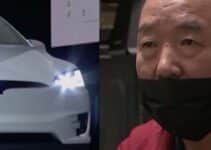Beijing this year aims to expand 5G infrastructure, set up a national system of data centers, keep a tight regulatory grip on big platforms, and push e-commerce in rural China, according to goals set forth this week at the annual lianghui (“two sessions”) meeting of the National People’s Congress (NPC) and the Chinese People’s Political Consultative Conference (CPPCC).
China plans to bolster the tech sector by increasing state funding in key areas such as chip manufacturing and improving the capital market so more tech firms can raise money domestically. Having a growing and self-sustained tech sector is central to the government’s plan to achieve these set targets, according to government reports presented in the meeting.
Given the ongoing surge in the pandemic in China, an economic slowdown, and uncertain global geopolitical pressure, many of the goals for 2022 will be particularly challenging to achieve. The GDP growth target of 5.5% is ambitious, despite being the lowest in a decade (It was 6% last year; no target was set in 2020 due to the pandemic).
Members of the NPC and CPPCC, the nation’s top legislative bodies, meeting from March 5 to March 11, emphasized the need for a stable growing economy as China prepares to host the all-important 20th Party Congress in autumn. This year is also the second year in China’s 14th Five-Year Plan (2021 to 2025), which is set to make the country wealthier and more equal, growing China’s per capita GDP to the level of moderately developed nations and expanding its middle-class.
Achieving self-sustainability in semiconductors and strategically important areas such as AI, biotechnology, and advanced manufacturing tools and machines are high on the government’s priorities. The government will fund small startups that possess innovative tech in the manufacturing, fostering what they called “little giants,” according to the Ministry of Finance’s report filed to the meeting and released to the press.
New energy vehicles will continue to be embraced. The government aims to build more green energy power structures to ease its reliance on fossil fuels. In key growth areas like Beijing, Shanghai, and Guangdong, the state will fund national laboratories and tech innovation hubs to attract tech talents.
Reassuring capital markets
China will “promote the development of venture capital,” Premier Li Keqiang said on March 5 at the opening of the six-day NPC assembly. The remarks sent an assuring signal to worried tech venture capitalists after China’s year-long tech crackdown erased trillions of dollars in market cap from Chinese tech majors like Alibaba, Didi, and Meituan. However, the country will still be mindful of the systematic risks brought by “unregulated and disorderly expansion of capital,” Li said in the government work report.
Despite the fears spawned by last year’s regulatory crackdowns, venture capital investments in China jumped almost 50% from $86.7 billion in 2020 to a new record of $130.6 billion for 2021, data from research firm Preqin shows. However, venture capital pivoted to financing hard tech areas like semiconductors and robots rather than highly-regulated areas like edtech.
In addition to leveraging venture capital, the country plans to improve the operation of public capital markets by reforming China’s new third board, an over-the-counter share trading platform serving small and medium enterprises (SMEs). China made the first step of reform by launching the Beijing Stock Exchange last November, targeting small tech startups and enhancing the connectivity of the multi-level capital markets.
Infrastructure priorities: 5G, data centers
Regulatory crackdowns on large internet platforms will likely continue this year, as the Supreme People’s Procuratorate, the state’s prosecutor, said in the NPC that it plans to closely monitor anti-monopoly, anti-competitive behaviors, and guide the capital market to orderly development.
China plans to construct more 5G stations and further utilize data as a critical national resource to bring more value from its increasingly digitized economy. China’s economic planner, the National Development and Reform Commission (NDRC), said in a report released to the assembly that it will launch several “major infrastructure projects,” building 5G networks, artificial intelligence (AI), and an integrated national system of big data centers.
China elevated data to one of the key economic resources in the 14th Five-Year Plan released last year. In 2021, China laid the groundwork for keeping data secure with a slew of regulations. This year, it will further the work to allow data to be better classified and defined to better share and trade data, said the NDRC report.
Building countryside e-commerce
As China faces continued weak consumption in 2022, the government hopes to compensate by expanding rural e-commerce. The government work report proposed to strengthen the construction of business ecosystems in county-level communities and to improve rural delivery services. The economic planner’s report shows that express delivery services now cover more than 80% of the country’s administrative villages, which will “further unleash consumption potential in rural areas.”
In 2021, China’s total online retail sales increased 14% year on year to RMB 1.3 trillion ($206 billion), or 30% of China’s overall retail consumption of RMB 4.4 trillion, according to NDRC’s report.
In addition, the economic planner wants to boost cross-border e-commerce as part of its efforts. For example, China plans to expand the scope of the pilot scheme for cross-border e-commerce retail imports and started planning on building seaports, inland ports, and overseas warehouses.
Smaller manufacturing startups
In 2021, manufacturing accounted for 27.4% of China’s GDP. The country aims to upgrade this key sector by nurturing homegrown startups specializing in robotics, automation, industrial software, and other smart manufacturing tools.
Since the US-China trade war in 2018, China has rushed to reinforce its manufacturing supply chains and make sure it doesn’t rely too much on foreign supplies in core technologies. China has funded more than 4,700 startups since 2021 and plans to invest in 3,000 more this year.
The government called the state incubation the “little giants” project, setting out to give out RMB 10 billion ($1.58 billion) over the years to fund startups in key manufacturing areas. These areas include high-end machine tools, aerospace equipment, marine engineering equipment, advanced railway equipment, electric power equipment, new materials, biomedicine, and high-end medical equipment.
Yet more support for semiconductors
China’s semiconductor industry has seen an exponential increase in investments and government support since 2019, as the country’s top chipmakers faced US sanctions. The government vowed to rely less on foreign technology in its chip production, but the complexity of this high-tech industry means China’s pursuit of self-sufficiency will be a long-term effort.
The government vowed to keep throwing money and support into this effort. China’s Ministry of Finance said in its report to the NPC assembly that it would channel funds to the integrated circuits industry through market measures. It would also give tax cuts to the chip industry, alongside other sectors like industrial mother machines, 5G, biotech, and agricultural equipment.
The NDRC said it will guide semiconductor makers to gradually expand their production, stabilize supply chains in and outside of China, and will help them connect with suppliers. It also vowed to pay close attention to raw materials prices, helping suppliers and manufacturers secure production resources.
’Moderating’ clean energy policies and supporting NEVs
Chinese policymakers have faced significant challenges as they tried to meet ambitious carbon reduction goals over the last year, ranging from heavy reliance on coal to a nationwide power crisis.
China will continue its efforts to reduce the use of coal and promote renewable energy sources, according to the government work report. And yet, the moves to reach its emissions peak will be done “in a well-ordered way,” Li said, adding that energy supply will be ensured “in accordance with overall planning,” in addition to efforts to build wind and solar power plants.
Last year, the central government imposed strict measures by enforcing energy consumption mandates and intensity limits. As a result, at least a dozen Chinese provinces introduced power cut measures in September. This, along with soaring energy prices, forced many factories to reduce or even halt their operations late last year.
Beijing will also push the country’s EV industry forward to drive consumption and cut carbon emissions. The NDRC, the economic planning agency, said in its report that it will continue to boost purchases of NEVs and build more battery charging and swapping facilities. Meanwhile, the Ministry of Finance pledged to maintain subsidies and tax exemptions for NEV purchases.


